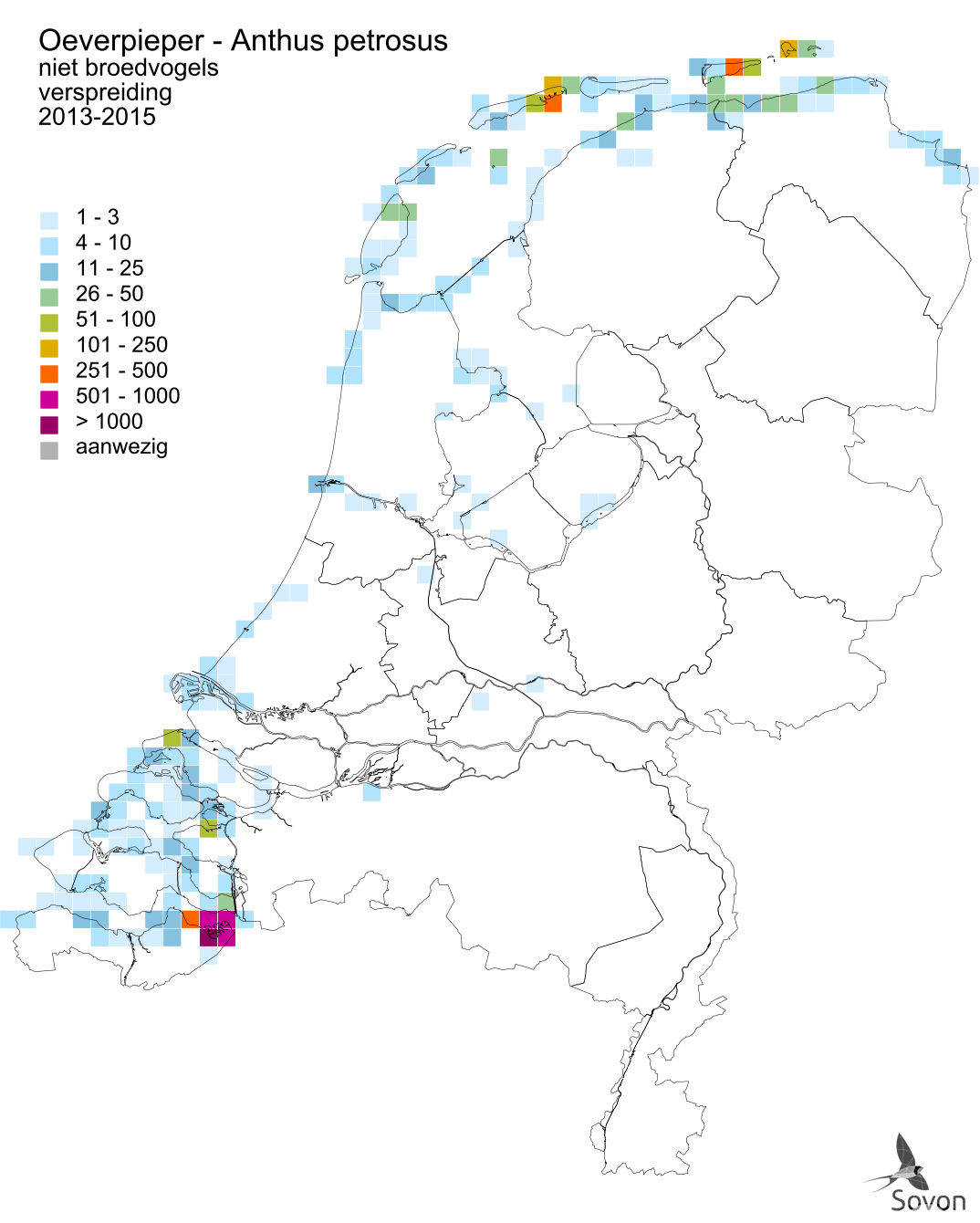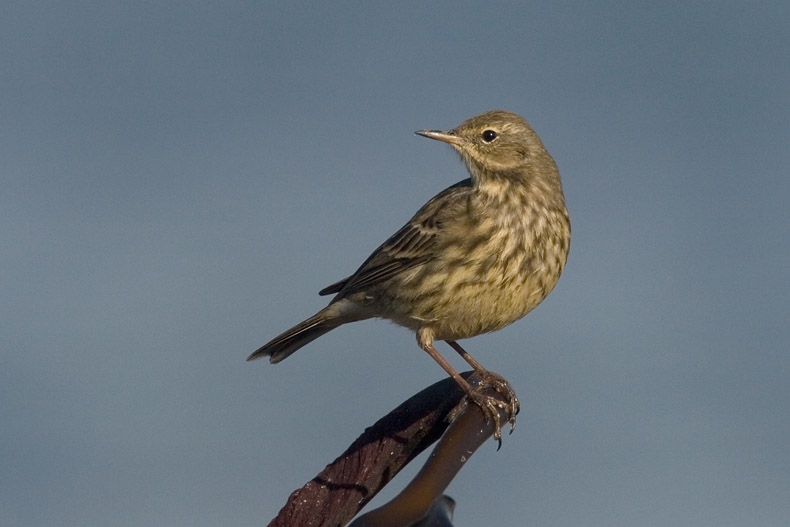Verspreiding en trends
Verspreiding

Deze kaart is gebaseerd op de Vogelatlas van Nederland (Sovon 2018). Per atlasblok van 5x5 km is er een schatting van het aantal individuen gegeven.
Aantalsontwikkeling
niet-broedvogeltrend
Deze grafiek is gebaseerd op het Punt Transect Tellingen project (PTT). Weergegeven is de jaarlijkse index van de winterpopulatie in december (rode punten), de trendlijn (donker gekleurde lijn) en het 95% betrouwbaarheidsinterval
- vanaf 1980
- geen significante aantalsverandering (0)
- laatste 12 jaar
- geen trend aantoonbaar (~)
Broedsucces en overleving
Onvoldoende gegevens beschikbaar voor trendanalyse.
Seizoensvoorkomen
seizoenspatroon
Deze grafiek is gebaseerd op LiveAtlas. Weergegeven is de meldingsfrequentie per decade, gemiddeld over de laatste 5 jaren. De meldingsfrequentie is het percentage volledige lijstjes waarop de soort is geregistreerd.
Beschrijving voorkomen
Buiten broedtijd
Als echte kustvogel vertoont de Oeverpieper niet vaak ver in het binnenland. In het IJsselmeergebied is de soort schaars en diep landinwaarts verdienen alle waarnemingen aandacht. De Oeverpieper vertoeft in Nederland tussen half september en half april, met schaarse meldingen in augustus en mei. De aantallen zijn het hoogst in oktober-november, wanneer vooral de kwelders van het Waddengebied en schorren van het Verdronken land van Saeftinghe vol met Oeverpiepers kunnen zitten. In koude winters kan het accent richting Deltagebied verschuiven, waarna het Waddengebied in het voorjaar weer zijn koppositie herneemt. De terugtrek naar de Scandinavische broedgebieden verloopt bijna ongemerkt tussen eind februari en begin april.
Vogelrichtlijn
Staat van instandhouding
De Vogelrichtlijn richt zich op de instandhouding van alle natuurlijk in Europa in het wild levende vogelsoorten waaronder de Oeverpieper.
Dit betekent dat de EU-lidstaten maatregelen moeten nemen om de populaties van deze soorten op een niveau te houden of te brengen dat met name beantwoordt aan de ecologische, wetenschappelijke en culturele eisen. Daaronder wordt onder andere een gunstige staat van instandhouding verstaan. Het begrip Staat van instandhouding is zo ongeveer synoniem voor de mate van duurzaamheid of gezondheid van een populatie van een soort.
De Vogelrichtlijn verlangt van de lidstaten dat ze leefgebieden voor vogels in voldoende omvang en kwaliteit in stand houden, waaronder door de aanwijzing van speciale beschermingszones ten behoeve van het Europese Natura 2000-netwerk. Voor de Oeverpieper zijn in Nederland geen speciale beschermingszones aangewezen. De landelijke populatie moet zich wel op een gunstig niveau kunnen handhaven.
Methodiek voor de bepaling van de Staat van instandhouding van vogels
niet-broedvogel
De Staat van Instandhouding van de Oeverpieper als niet-broedvogel in Nederland is gunstig.
| Beoordeling Staat van Instandhouding | ||||
| Verspreiding | Populatie | Leefgebied | Toekomst | Eindoordeel |
| gunstig | gunstig | gunstig | gunstig | gunstig |
Aangewezen gebieden
Er zijn geen gebieden aangewezen voor deze soort.
Telrichtlijnen
Er zijn geen telrichtlijnen voor deze soort.
